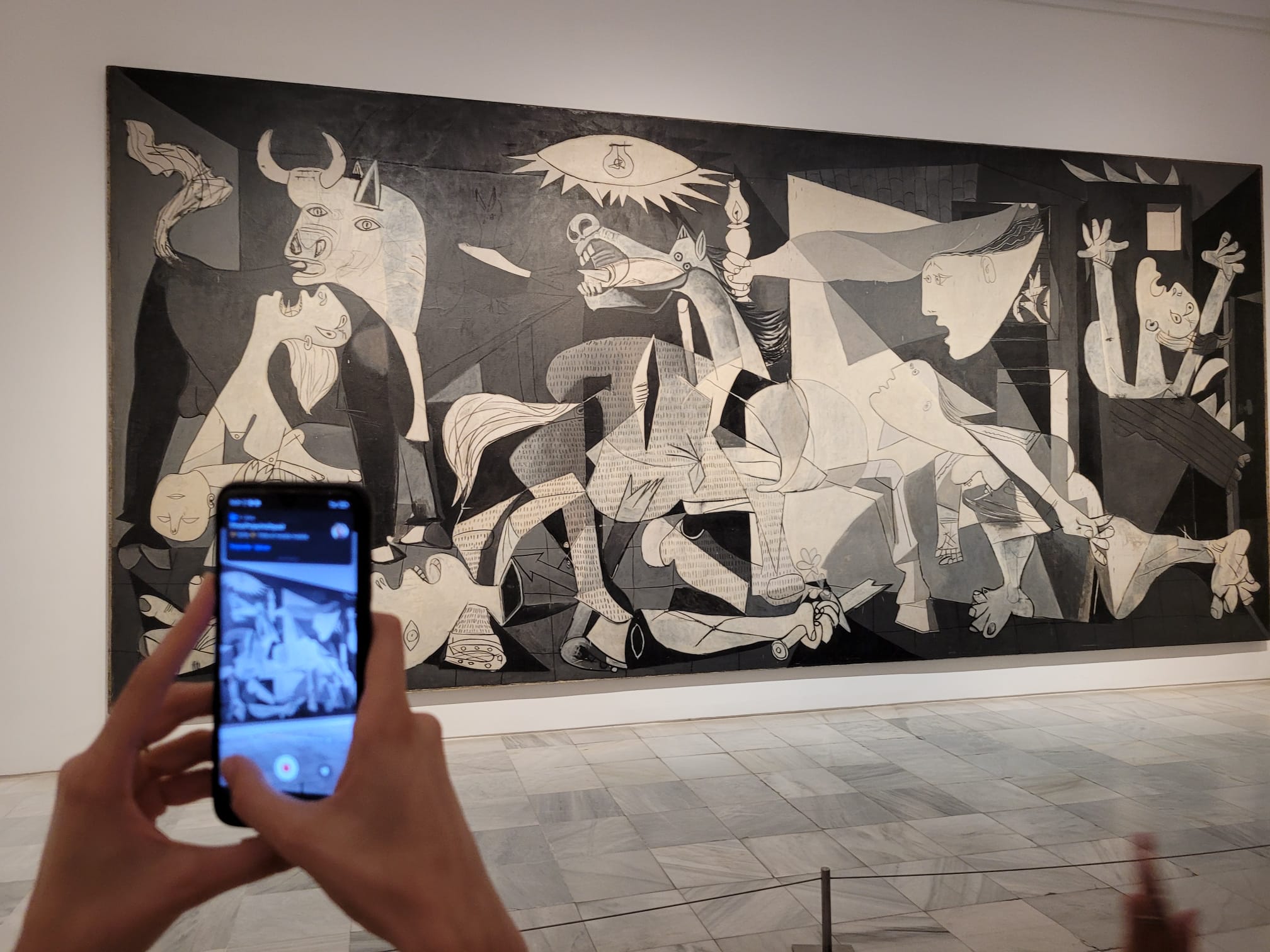A continuous procession of visitors who stop in front of the masterpiece, snap a photograph, pause to admire it, and then continue their visit. Ever since Madrid ’s Reina Sofía Museum lifted its ban on photographing Pablo Picasso’s Guernica , perhaps the Spanish artist’s most famous work, executed in 1937, the public has been taking pictures of the work.
"Taking a selfie in front of the work,“ a museum spokesperson told El País newspaper, ”doesn’t damage the painting, rather it prevents people from trying to sneak a photo and then the custodians scold them." Because in fact many have pointed this out: it’s not that photos weren’t taken before. They used to be taken all right, but without being noticed: and so, rather avoid the inconvenience to visitors and leave them free to take pictures. And maybe even avoid controversy, as when last year Mick Jagger, the Rolling Stones frontman, visited the museum by indulging in a photo in front of the painting, drawing the ire of social media. What if someone then damages the work as happened again last year, when an Italian tourist caused damage to a work by Alberto Sánchez in order to take a selfie? That’s a risk that can be taken: unthinkable to ban everything to avoid the danger of seeing a damaged work. Then we might as well close the museum: a visitor can damage a work for a thousand different reasons.
It will then be an extra opportunity for visitors to go on the museum’s dedicated tour of Picasso’s Guernica , which runs every Thursday, Saturday and Sunday: a one-and-a-half-hour tour, for groups of up to nine people, through which the museum provides a narrative that is part of the research that the Reina Sofía carries out on this work, with the aim of going beyond traditional interpretations and revealing the multiplicity of factors and implications that intervene in the production of the artistic fact, and to offer a narrative that helps the visitor establish possible connections between the works that make up the space visited, the documentation displayed in the showcases, and the rest of the Collection from a transversal perspective that allows Guernica to be analyzed from different places.
Below are some photographs of the public who are finally free to take home a personal memory of one of the world’s most famous paintings.







 |
| Everyone photographs Picasso's Guernica now that you can finally |
Warning: the translation into English of the original Italian article was created using automatic tools. We undertake to review all articles, but we do not guarantee the total absence of inaccuracies in the translation due to the program. You can find the original by clicking on the ITA button. If you find any mistake,please contact us.